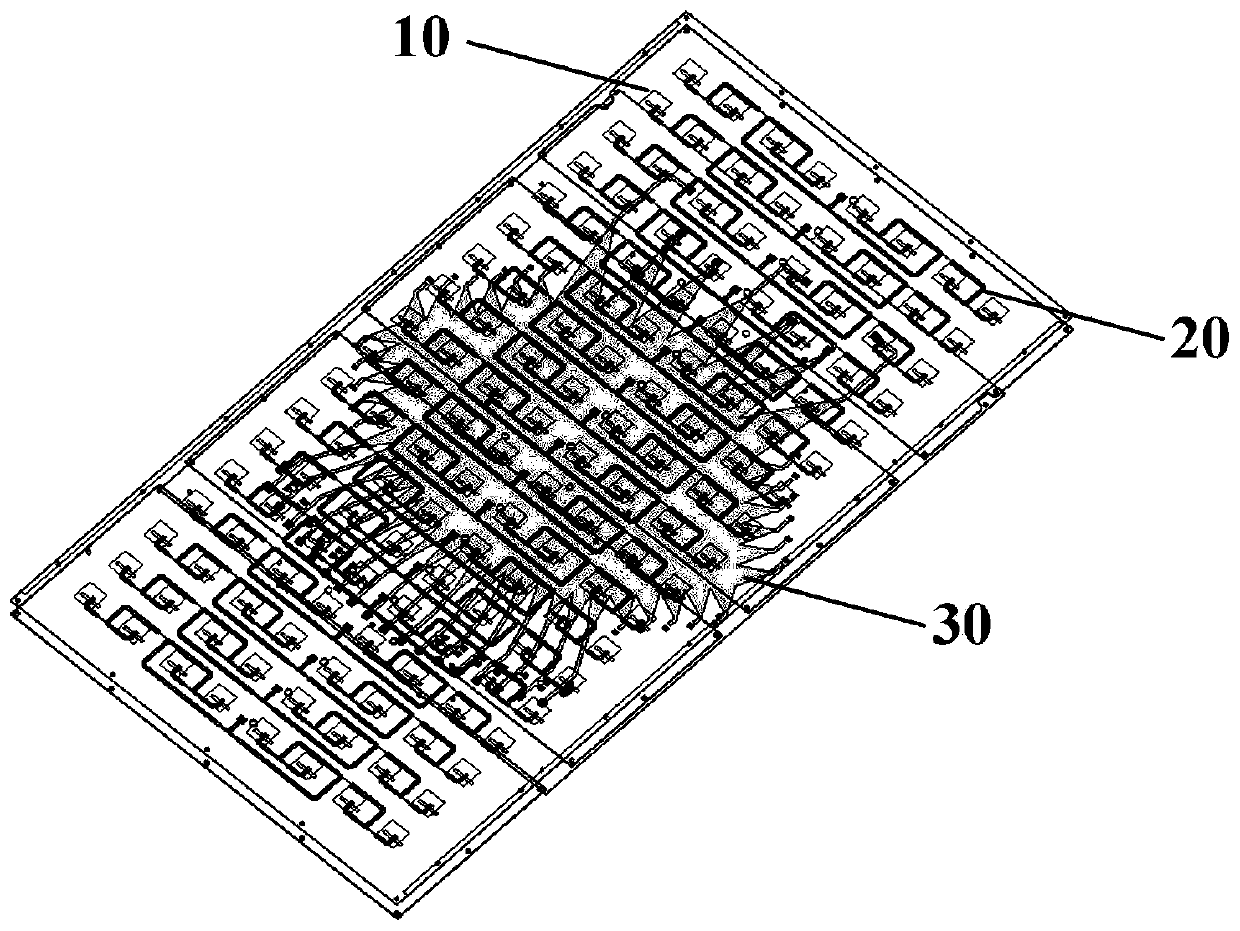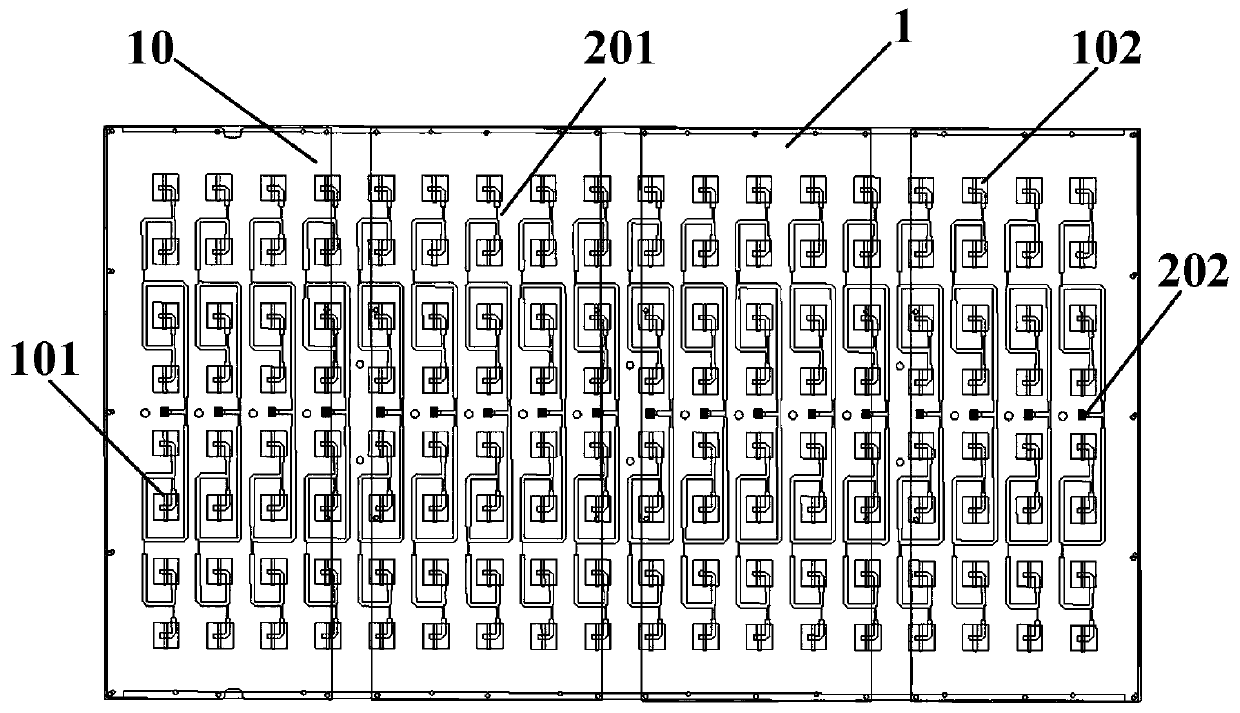Low-sidelobe lens array antenna for ETC system
A lens array, low side lobe technology, applied to antenna arrays, antennas, slot antennas and other directions that are powered on separately, can solve the problems of car following interference, reduced efficiency, active standing waves, etc., to avoid amplitude and phase errors and improve production. Efficiency, the effect of simplifying installation costs
- Summary
- Abstract
- Description
- Claims
- Application Information
AI Technical Summary
Problems solved by technology
Method used
Image
Examples
Embodiment Construction
[0033] In order to make the objectives, technical solutions, and advantages of the present invention clearer and clearer, the present invention will be further described in detail below in conjunction with embodiments. It should be understood that the specific embodiments described here are only used to explain the present invention, but not to limit the present invention.
[0034] In view of the problems in the prior art, the present invention provides a low-sidelobe lens array antenna and smart terminal used in an ETC system. The present invention will be described in detail below with reference to the accompanying drawings.
[0035] Such as Figure 1-Figure 6 As shown, the low side-lobe lens array antenna for ETC system provided by the embodiment of the present invention includes: a first dielectric substrate 1, a second dielectric substrate 2 and a third dielectric substrate 3.
[0036] The first dielectric substrate 1 is manufactured by a selective electroplating process, and an...
PUM
 Login to View More
Login to View More Abstract
Description
Claims
Application Information
 Login to View More
Login to View More - R&D
- Intellectual Property
- Life Sciences
- Materials
- Tech Scout
- Unparalleled Data Quality
- Higher Quality Content
- 60% Fewer Hallucinations
Browse by: Latest US Patents, China's latest patents, Technical Efficacy Thesaurus, Application Domain, Technology Topic, Popular Technical Reports.
© 2025 PatSnap. All rights reserved.Legal|Privacy policy|Modern Slavery Act Transparency Statement|Sitemap|About US| Contact US: help@patsnap.com



